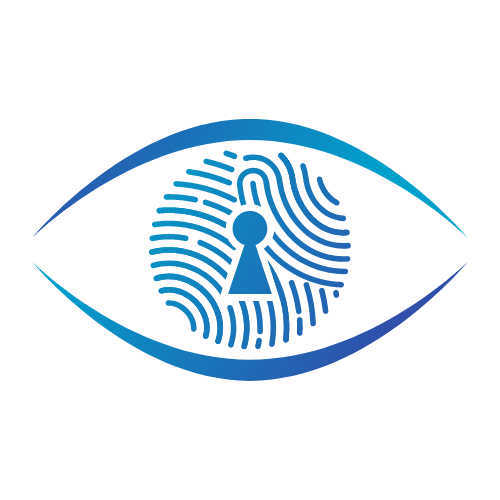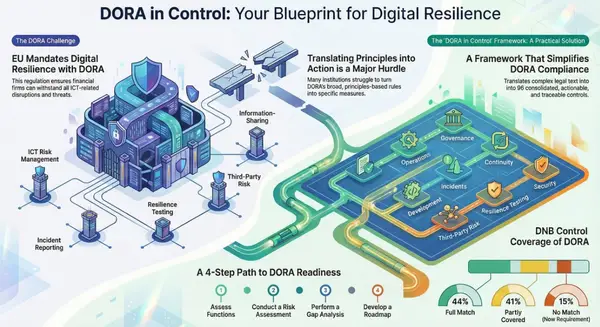NIST Cybersecurity Framework 2.0: A Comprehensive Guide for Modern Organizations
Stay ahead of evolving compliance requirements with our comprehensive analysis of 2025 regulatory trends. This guide offers strategic insights and practical implementation steps for compliance professionals navigating today's complex regulatory landscape.

NIST Cybersecurity Framework 2.0: A Comprehensive Guide for Modern Organizations
Introduction
In today's rapidly evolving threat landscape, organizations face unprecedented cybersecurity challenges that require structured, adaptable approaches to risk management. The National Institute of Standards and Technology (NIST) Cybersecurity Framework (CSF) has emerged as one of the most widely adopted security frameworks globally, providing organizations with a flexible, risk-based approach to managing cybersecurity risk. In 2023, NIST released CSF 2.0, a significant update that expands the framework to address modern challenges and provide more comprehensive guidance.
This article provides an in-depth analysis of NIST CSF 2.0, its key components, implementation strategies, and its critical role in helping organizations build robust cybersecurity programs in 2025 and beyond.
What is NIST CSF 2.0?
The NIST Cybersecurity Framework 2.0 is a voluntary framework consisting of standards, guidelines, and best practices to manage cybersecurity risk. Originally developed in response to Executive Order 13636 in 2013, the framework has evolved to become a cornerstone of organizational security strategies worldwide.
CSF 2.0 represents a major revision that maintains the framework's core principles while expanding its scope and applicability. Unlike regulatory frameworks that mandate specific controls, NIST CSF 2.0 provides a flexible structure that organizations can adapt to their specific needs, regardless of size, sector, or cybersecurity maturity.
Evolution from CSF 1.1 to CSF 2.0
NIST CSF 2.0, released in 2023, builds upon the foundation of CSF 1.1 with several key enhancements:
- Expanded scope: CSF 2.0 extends beyond critical infrastructure to address cybersecurity challenges across all sectors and organization types.
- Enhanced governance emphasis: The updated framework places greater importance on governance structures and executive leadership's role in cybersecurity risk management.
- Supply chain focus: CSF 2.0 includes more robust guidance on managing cybersecurity risks in supply chains and third-party relationships.
- Integration with other frameworks: The new version provides clearer mapping to other frameworks and standards, facilitating easier alignment with multiple compliance requirements.
- Implementation tiers refinement: The implementation tiers have been refined to better help organizations assess their current cybersecurity posture and establish improvement goals.
Core Structure of NIST CSF 2.0
NIST CSF 2.0 maintains the same fundamental structure as its predecessor, organized around three primary components:
1. Framework Core
The Framework Core provides a set of cybersecurity activities and outcomes organized into six functions, each essential to a comprehensive cybersecurity program:
- Identify (ID): Develop organizational understanding to manage cybersecurity risks to systems, people, assets, data, and capabilities.
- Protect (PR): Implement appropriate safeguards to ensure delivery of critical services.
- Detect (DE): Implement appropriate activities to identify the occurrence of a cybersecurity event.
- Respond (RS): Implement appropriate activities to take action regarding a detected cybersecurity incident.
- Recover (RC): Implement appropriate activities to maintain plans for resilience and to restore any capabilities or services that were impaired due to a cybersecurity incident.
- Govern (GV): [NEW in CSF 2.0] Develop and implement the organizational structure, policies, procedures, and processes to manage cybersecurity risk.
Each function is further divided into categories, subcategories, and informative references that provide specific outcomes and technical guidance.
2. Implementation Tiers
Implementation Tiers describe the degree to which an organization's cybersecurity practices exhibit the characteristics defined in the framework, ranging from Partial (Tier 1) to Adaptive (Tier 4). These tiers reflect a progression from informal, reactive responses to approaches that are agile and risk-informed.
CSF 2.0 has refined these tiers to provide clearer guidance on:
- Risk Management Processes
- Integrated Risk Management Programs
- External Participation
- Supply Chain Risk Management
3. Profiles
Profiles represent the alignment of the organization's requirements and objectives, risk appetite, and resources against the desired outcomes of the Framework Core. Organizations can create:
- Current Profile: Representing the current state of cybersecurity activities
- Target Profile: Representing the desired state of cybersecurity activities
The gap between these profiles helps organizations develop roadmaps for improving their cybersecurity posture.
Key Benefits of Implementing NIST CSF 2.0
Implementing NIST CSF 2.0 offers organizations numerous advantages:
- Common Language: Establishes a shared vocabulary for cybersecurity risk management across departments, stakeholders, and partners.
- Regulatory Alignment: Helps organizations meet various regulatory requirements through its comprehensive approach and mappings to other standards.
- Scalability: Provides value to organizations of all sizes and sectors, with the flexibility to scale implementation based on specific needs and resources.
- Risk-Based Approach: Encourages organizations to prioritize cybersecurity investments based on risk assessment rather than implementing controls indiscriminately.
- Continuous Improvement: Supports an iterative approach to enhancing cybersecurity capabilities over time.
- Executive Engagement: The new Govern function strengthens executive leadership involvement in cybersecurity risk management.
Implementation Strategies for 2025
As organizations look to implement or update to NIST CSF 2.0 in 2025, several strategies can enhance success:
1. Cross-Functional Approach
Establish a cross-functional team representing IT, security, legal, compliance, operations, and executive leadership to drive framework adoption.
2. Risk-Based Prioritization
Conduct a comprehensive risk assessment to identify the most critical assets and threats, then prioritize implementation efforts accordingly.
3. Phased Implementation
Adopt a phased approach, beginning with the most critical functions and categories based on your organization's risk profile.
4. Integration with Existing Frameworks
Map CSF 2.0 to existing frameworks and standards already in use within your organization to identify overlaps and gaps.
5. Technology Enablement
Leverage technology solutions that support automation, monitoring, and reporting of framework implementation and effectiveness.
6. Supply Chain Focus
In 2025, supply chain risks continue to be a significant concern. Develop robust processes for assessing and managing these risks using the expanded guidance in CSF 2.0.
7. Continuous Assessment
Implement regular assessment cycles to evaluate the effectiveness of controls and identify areas for improvement.
CSF 2.0 and Emerging Technologies
As organizations increasingly adopt emerging technologies, CSF 2.0 provides valuable guidance for managing associated risks:
Artificial Intelligence and Machine Learning
CSF 2.0 can help organizations:
- Identify AI/ML assets and their criticality
- Implement appropriate safeguards for AI systems and data
- Detect anomalies in AI/ML model behavior
- Develop response plans for AI-related incidents
Cloud Security
The framework offers guidance on:
- Shared responsibility models
- Cloud service provider assessment
- Data protection in cloud environments
- Incident response in hybrid environments
Internet of Things (IoT)
CSF 2.0 helps address:
- IoT device inventory and management
- Secure configuration of IoT devices
- Monitoring for anomalous IoT behavior
- Recovery strategies for compromised devices
Mapping to Other Frameworks
One of the strengths of NIST CSF 2.0 is its compatibility with other cybersecurity frameworks and standards. Key mappings include:
- ISO 27001/27002: CSF 2.0 aligns with these international standards for information security management systems.
- GDPR: The framework can support compliance with GDPR's security requirements.
- HIPAA Security Rule: Healthcare organizations can use CSF 2.0 to address HIPAA security requirements.
- PCI DSS: Organizations handling payment card data can map CSF 2.0 to PCI DSS requirements.
- State Privacy Laws: The framework can help address security requirements in state-level privacy laws like CCPA/CPRA.
Challenges and Considerations
While NIST CSF 2.0 offers significant benefits, organizations should be aware of potential challenges:
- Resource Requirements: Comprehensive implementation requires dedicated resources and ongoing commitment.
- Customization Needs: Organizations must adapt the framework to their specific context and requirements.
- Measurement Complexity: Quantifying the effectiveness and return on investment of framework implementation can be challenging.
- Balancing Compliance and Security: Organizations must focus on security outcomes rather than simply checking compliance boxes.
- Integration with Privacy Frameworks: As privacy regulations continue to evolve, organizations need to consider how CSF 2.0 integrates with privacy frameworks like NIST Privacy Framework.
Real-World Implementation Examples
Case Study 1: Financial Services Institution
A mid-sized financial institution implemented CSF 2.0 to address multiple regulatory requirements and enhance its security posture. By mapping the framework to existing compliance obligations, the organization reduced duplicate efforts and achieved a 30% reduction in audit preparation time.
Case Study 2: Healthcare Provider
A healthcare system leveraged CSF 2.0 to improve its cybersecurity governance and supply chain risk management. The implementation helped identify previously unknown third-party risks and led to enhanced procurement processes that reduced security incidents related to vendors by 45%.
Case Study 3: Manufacturing Company
A global manufacturer used CSF 2.0 to create a consistent security approach across diverse operational environments, including IT, OT, and IoT. The common language provided by the framework improved communication between technical teams and executive leadership.
Future Outlook
As cybersecurity threats continue to evolve, NIST CSF will likely continue to adapt. Organizations that implement CSF 2.0 now will be better positioned to incorporate future updates and maintain robust security postures.
Key trends that may influence future CSF developments include:
- AI-driven threat landscapes
- Quantum computing implications for cryptography
- Extended reality (XR) security considerations
- Zero trust architecture integration
- Cyber-physical systems security
Conclusion
NIST CSF 2.0 represents a significant evolution in cybersecurity risk management, offering organizations a comprehensive, flexible framework for addressing modern security challenges. As cyber threats continue to grow in sophistication and impact, frameworks like CSF 2.0 provide essential guidance for organizations seeking to build resilient, adaptive security programs.
By understanding and implementing the framework's components, organizations can enhance their ability to identify, protect against, detect, respond to, and recover from cybersecurity incidents while establishing strong governance structures to manage cybersecurity risk at an enterprise level.
As we navigate the complex cybersecurity landscape of 2025, NIST CSF 2.0 stands as a valuable resource for organizations of all sizes and sectors committed to protecting their critical assets and maintaining stakeholder trust.





